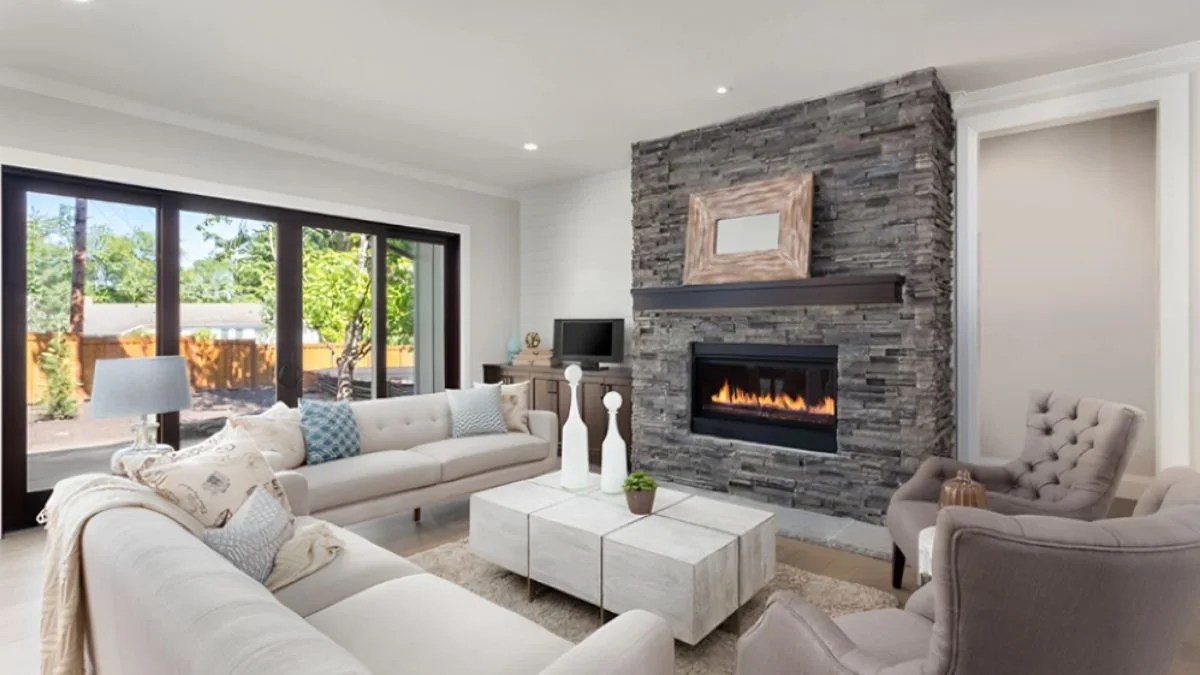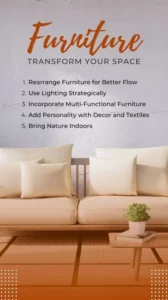HOME IMPROVEMENT
Designing a Cozy and Stylish Living Room with Customizable Seating

Your living room is the center of your household, and your living room has evolved over time. It’s where you unwind after a long day, share quality moments with family, and host your guests. The right seating can turn your space into something much more comfortable and stylish.
From designing space to meet your space needs, be it a large family or hosting lots of friends, or a quiet corner to chill, customizable seating makes it all possible. From size to shape, color to fabric, custom seating allows you to create a living room that is as unique as you are.
How to Choose the Right Modular Sectionals for Your Space
Choosing the right modular sectional starts with assessing your space and lifestyle. Measure your living room to determine how much room you have for seating. Consider traffic flow, ensuring there’s enough space for people to move comfortably.
Next, think about your lifestyle needs. Do you frequently host guests, or are you looking for a cozy corner to unwind? Modular sectionals are ideal for both. They allow you to add or rearrange pieces to suit your space. If you prefer flexibility, opt for modular pieces with detachable sections so you can easily switch things up.
Lastly, choose a style that complements your decor. Whether you prefer sleek and modern or plush and traditional, modular sectionals come in various designs to fit your taste.
Choosing the Right Fabric and Color
Your seating balances comfort and durability on its material. If you have kids or pets, you’ll want a fabric that’s easy to clean and resistant to stains. Microfiber and performance fabrics are wonderful choices, as they are soft and durable. Leather is also a popular option, lending an element of luxury while still being easily wiped clean.
Color also has a huge impact on the atmosphere of your living room. Neutral colors such as gray, beige, and white create a serene and sophisticated room. If you’re looking for something bold, rich blue, emerald green, or mustard can all add character and warmth. If you’re not sure, choose a neutral base and change it up with colorful pillows or throws.
Seating: How to Place Your Chairs for Comfort and Utility
How you position your seating influences how cozy and welcoming your living room is. Even if you enjoy watching TV, your couch needs to be oriented in such a way that you are sitting comfortably for it. For discussion, set up seating in a U formation or L formation so everyone can see each other well.
Be sure to allow room to move, however. Few things are more inviting than a spacious living room. Ensure there’s ample space for people to comfortably move around without crashing into furniture. If you have a small area, select seating with slender arms and legs to keep the area feeling more airy.
Layering Comfort with Cushions and Throws
The easiest way to add warmth and personality to your seating is with cushions and throws. Combine diverse textures and patterns to create a warm and stylish living space. Soft, plush cushions emanate a friendly vibe; knitted or fur throws provide extra coziness.
If you have a neutral-colored sofa, add cushions in bright colors or patterns so it pops. If the sofa itself is colorful, go for neutral cushions to counteract the effect. Mixing and matching the size and shape of cushions also lends your seating pile an inviting look.
To Provide Convenient Furniture Items
A cozy and elegant living room accommodates various lifestyles. In addition to your primary couch, add armchairs, ottomans, or even a chic bench. Ottomans can serve as additional seating or a footstool, and a bench next to a window provides a sweet reading nook.
Floor cushions or poufs are ideal for providing casual and flexible seating, which is handy if you’re constantly entertaining. This makes it portable and could be stored when not in use. This allows everyone to feel comfortable in their own space.
Getting Creative with Lighting for Your Seating Area
Lighting contributes significantly to the feeling of warmth in your living room. Soft, warm lighting helps create a relaxed ambiance, while bright lighting is handy for reading or working. Having a mix of lighting sources in your space, such as floor lamps, table lamps, and wall sconces, will help you find the right mix.
If you have a modular sectional or sofa in a given area, add a floor lamp nearby for a new reading nook. Table lamps on side tables provide light without being overpowering. LED strip lights under furniture or shelves can be a stylish addition if you have modern elements in your living room.
Décor and Accessories: Make It Personal
After you have set up your seating, it is time to add personality to your space. Decorative items such as artwork, rugs, and plants help integrate everything. An oversized area rug in your seating area helps define objects in the space and adds warmth. Wall art or framed photos can help make your living room personal.
Plants are another great way to bring freshness and life to your living room. Whether you lean toward big potted plants or succulents on a side table, greenery brings a natural, calming element.
Keep It Streamlined and Organized
 A chic living room is more than just the furniture and décor that fill the space; it is a question of cleaning and organization, too. Keep this room as bright and airy as possible, with shelving, baskets, and built-in compartments providing plenty of storage to keep clutter at bay. If you have a modular sectional sofa with storage underneath, store blankets, pillows, or magazines in it.
A chic living room is more than just the furniture and décor that fill the space; it is a question of cleaning and organization, too. Keep this room as bright and airy as possible, with shelving, baskets, and built-in compartments providing plenty of storage to keep clutter at bay. If you have a modular sectional sofa with storage underneath, store blankets, pillows, or magazines in it.
Coffee tables that have storage or decorative baskets can also keep things tidy while adding to the design of the room. A clean and organized living room is roomier and more welcoming, making it a space you’ll want to spend time in.
Conclusion
Creating a cozy and stylish living room with customizable seating involves finding the perfect balance between comfort and style. Modular sectionals let you design a flexible seating arrangement that can match your space and your lifestyle. Choosing the proper fabric, color, and layout makes sure that your living room feels warm and welcoming.
Adding cushions, throws, lighting, and décor takes it to the next level while being orderly makes the space easier and more enjoyable to live in. With some creativity and forethought, you can make a living room that is both fashionable and practical for years to come.
FAQs
What seating works best in a small living room?
A modular sectional or a condensed loveseat with slender arms and legs fits, as this is space maximization that doesn’t make a room feel cramped.
How can I make my living room feel cozier without purchasing new furniture?
The addition of cushions, throws, warm lighting, and rugs immediately makes your place feel warmer and cozier.
How can I make my living room feel new without breaking the bank?
Replacing cushions, bringing in new decor, or simply moving your furniture around can make your living room feel refreshed without a hefty investment.
Did this article help you? Browse our blog for more interesting topics.
-

 BIOGRAPHY6 months ago
BIOGRAPHY6 months agoBehind the Scenes with Sandra Orlow: An Exclusive Interview
-

 HOME1 year ago
HOME1 year agoDiscovering Insights: A Deep Dive into the //vital-mag.net blog
-

 HOME1 year ago
HOME1 year agoSifangds in Action: Real-Life Applications and Success Stories
-

 BIOGRAPHY1 year ago
BIOGRAPHY1 year agoThe Woman Behind the Comedian: Meet Andrew Santino Wife




























